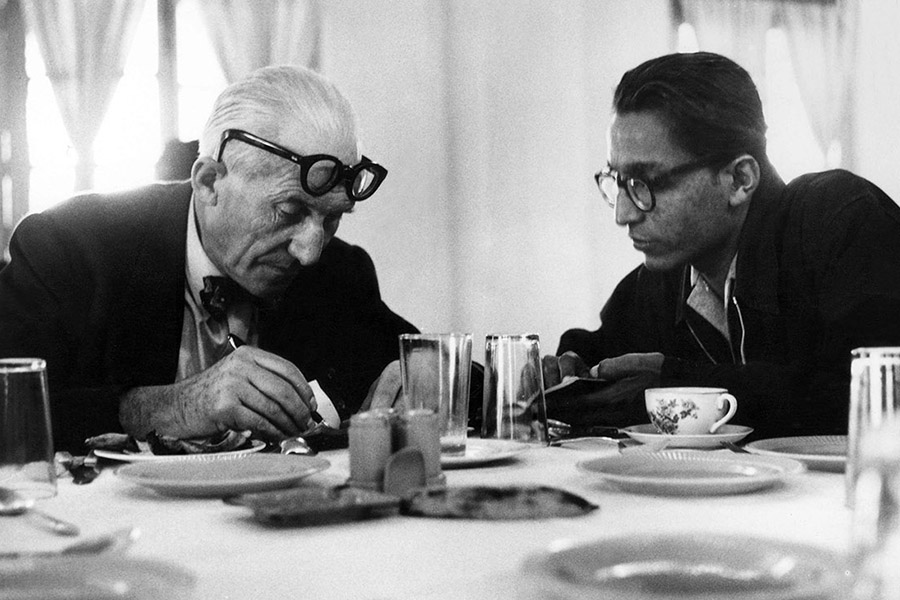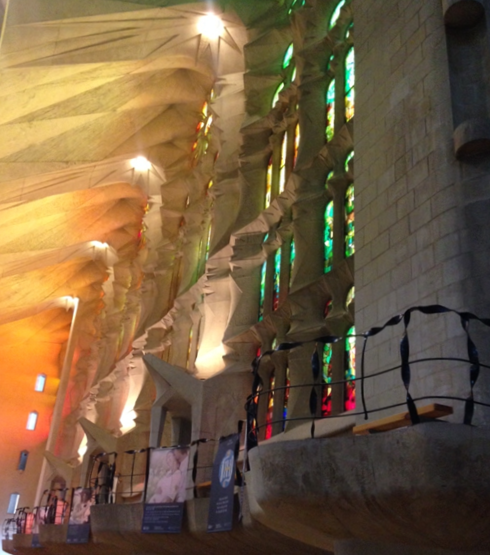INTRA-VIEWS: Stacey McMahan

Written by Guillermo Cebrian.
Inter implies between or among, whereas intra implies within (the profession). INTRA-VIEW with Stacey McMahan
The dynamic of this exercise is the following: The architect selects one image of their choice and a brief description of their personal understanding of the profession. While the image serves more as a subjective expression, the introductory text is meant to convey a declaration of intention. Together, these two form a self-portrait that serves as an introduction or cover for the interview. The interview that follows is based on the text provided, the architect’s work and their area(s) of interest.

Brief description of their personal understanding of the profession:
Perhaps we choose architecture in the same way we choose our spouse or friends. As an integral part of our life, we have serious and hopefully long-lasting relationships with our homes, our places of work, or the places we frequent to socialize or hang out. We shape and personalize the architecture around us with decoration, renovations and additions. It affects our mood, our health and makes a statement about who we are, stylistically.
Within the profession, architects must not only successfully navigate a myriad of technical conditions, but also understand how to design buildings with character and style. Whether design work is for a landscape, a home, business or multi-building developments, each design will have its own character shaped by many factors including the owner, budget and imagination of the architect. Architecture has the power to inspire. It can make us better without us even being aware.
How do you approach your projects?
(Stacey McMahan) SM: Typically, I’ll establish a framework of the given variables, such as the budget, program, and site, after which I listen and look for the one or two bigger picture aspects that can help to define a project’s character.
What architects/practices have had an influence on your work?
SM: Most of my sensibilities about architecture have been formulated in the time I’ve been at KHA, generally from working on projects, but also from those that have mentored me along the way, including people who did not have an architectural degree but knew their craft well. I’ve also been influenced by the work of BNIM, Lake Flato, Bill Bruder, the museum work of Tod Williams and Billie Tsien, and Richard Serra’s sculptures. Particular cultures with a distinct design aesthetic, such as the Shakers, have inspired my love for real materials, and an appreciation for the beauty inherent in, “green,” architecture. Historic preservation work has presented me with opportunities to understand the design practices from our past, when buildings were made to be comfortable with natural light and ventilation. Travel has also given me an appreciation for the ways in which place and spaces shape people and culture.
What are some experiences throughout your architectural career that impacted your design abilities?
SM: I’ve been involved in many renovation projects within a couple of blocks of our downtown office, and it’s been interesting to see how the materials have weathered or changed over time. Architecturally, the Museum of Visual Materials is very much the same, but the use has changed from a museum focus to that of an event focus. The Orpheum Theater Complex has spaces that have been shuttered, but is still successfully using the original theater and newer lobby as designed. The Raven building along with Cherapa Place have been catalysts for subsequent development in the area, such as the River Greenway and Arc of Dreams. One of my goals as an architect is to design in a way which supports a community and a building’s particular mission. How a building is used over time can be a good indicator of its success or lack thereof.
What has been an architectural challenge in a project and how you resolved it?
SM: Generally speaking, architects have always been tasked with mediating the chorus of loud voices in a room. This challenge is often emphasized when you work with those who represent a much narrower perspective on a project’s outcome. However, we’re fortunate to work with great clients who recognize that the design and development of a project is a conversation. The process of design uncovers project boundaries. Hopefully the design solution is successful and moves beyond being merely pragmatic.
What is the stage of a project that you enjoy the most?
SM: I enjoy working within a myriad of contextual layers, so my favorite type of projects are renovations, additions and preservation projects. Completely new buildings on greenfield sites are the most difficult for me. I can appreciate all stages of a project, from programming a building (and designing its layout) to overseeing the creation of documents and construction administration, where we continue to work out more nuanced design considerations.
Can you mention an enriching experience abroad that has impacted the way you practice architecture?
SM: I spent a year working in Haiti after the 2010 earthquake, which gave me a renewed appreciation for regional culture, context, and limitations. Traveling throughout Europe and experiencing centuries-old cities have certainly also left lasting impressions.
What are the biggest challenges of designing/building in South Dakota? How do you tackle them?
SM: In a broad sense, the challenges are the same here as almost anywhere else. There will always be constraints. The art of architecture is successfully addressing more pragmatic requirements but then also finding something that will make a project special. I’ve found work on university campuses to be very fulfilling, and am currently working on the renovation of Lincoln Hall on the South Dakota State University. It was the original library building, and represents an important part in the larger history of SDSU. The deeper challenge in the Lincoln Hall project lies in honoring the building’s past (and people’s expectations) while simultaneously imparting the building with a new purpose, ie; one which exceeds the original framework of just a library.
On an economic note, many owners out of necessity are choosing more inexpensive building types and materials to expedite their projects. Whereas this is an understandable impulse, culturally, our view should be towards permanence and integrity, improving our surroundings and leaving them in better shape for the benefit of our inheritors.
With respect to South Dakota, where do you think the profession is heading? Be as abstract or specific as you’d like.
SM: I’m encouraged by the quality and intent of young people entering the industry in our state. It also seems like there is a greater understanding about our profession in general and what design means for us in a daily context.